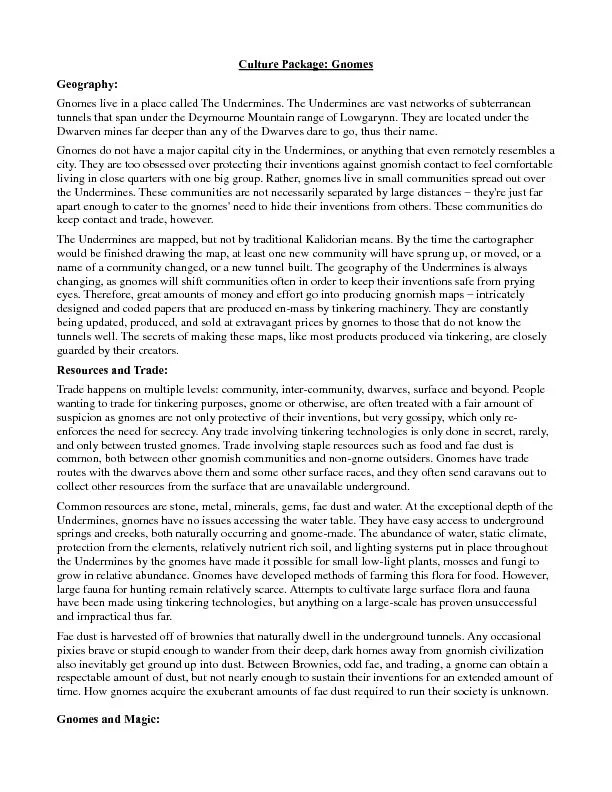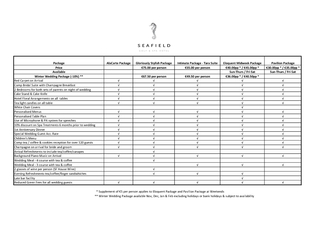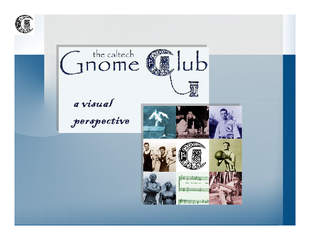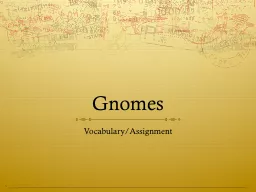PDF-Culture Package: Gnomes
Author : celsa-spraggs | Published Date : 2016-06-09
Geography Gnomes live in a place called The Undermines The Undermines are vast networks of subterranean tunnels that span under the Deymourne Mountain range of Lowgarynn
Presentation Embed Code
Download Presentation
Download Presentation The PPT/PDF document "Culture Package: Gnomes" is the property of its rightful owner. Permission is granted to download and print the materials on this website for personal, non-commercial use only, and to display it on your personal computer provided you do not modify the materials and that you retain all copyright notices contained in the materials. By downloading content from our website, you accept the terms of this agreement.
Culture Package: Gnomes: Transcript
Download Rules Of Document
"Culture Package: Gnomes"The content belongs to its owner. You may download and print it for personal use, without modification, and keep all copyright notices. By downloading, you agree to these terms.
Related Documents














